45 reading sodium on food labels
How to Read Sodium Percentages on Food Packages A "very low sodium" product must have less than 35 milligrams of sodium, while a "low sodium" product must have less than 140 milligrams of sodium. All in the Name Along with reading the food... how to understand food labels - Eat For Health Verkkohow to understand food labels What to look for… Don’t rely on health claims on labels as your guide. Instead learn a few simple label reading tips to choose healthy foods and drinks, for yourself. You can also use the label to help you lose weight by limiting foods that are high in energy per serve. 100g Column and Serving Size
Understanding Ingredients on Food Labels - American Heart … Mar 06, 2017 · Food labels are an important source of information about calories and the nutritional value of the foods you eat, a crucial tool in building a heart-healthy diet. The Nutrition Facts information is always displayed in the same orderly fashion and helps you understand how much of certain nutrients that you need to limit are contained in the ...

Reading sodium on food labels
The Basics of the Nutrition Facts Label Verkko4.3.2022 · A food item with a 5% DV of fat provides 5% of the total fat that a person who needs 2,000 calories a day should eat. You may need more or less than 2,000 calories per day. This means that you may need more or less than 100% DV that is listed on the package for some nutrients. Your Guide to the New Food Label | National Kidney Foundation VerkkoFood labels have percent daily values listed for a set group of nutrients based on the Food and Drug Administration (FDA) recommended 2000 calorie diet. You may ... Here is a list of ingredients to avoid when reading labels: chocolate and cocoa; cheese, milk ... Many people with kidney disease must limit their use of sodium. In general, ... Food Labels | CDC - Centers for Disease Control and Prevention If you eat the whole thing, you are eating 8 times the amount of calories, carbs, fat, etc., shown on the label. Total Carbohydrate shows you types of carbs in the food, including sugar and fiber. Choose foods with more fiber, vitamins, and minerals. Choose foods with lower calories, saturated fat, sodium, and added sugars. Avoid trans fat.
Reading sodium on food labels. PDF Reading Food Labels to Look for Sodium - ksw-gtg.com Easy-to-read food labels can help you find foods low in sodium. This will help you keep track of the number of grams (g) or milligrams (mg) you consume each day. According to Food and Drug Administration regula- tions, no manufacturer can say that their product is "low-sodium" unless they can prove that claim. Reading Food Labels - What You Need to Know - Drugs.com "Low sodium": One-hundred forty (140) mg or less per serving. "Very low sodium": Thirty-five (35) mg or less per serving. "Reduced" or "less" sodium: At least 25 percent less sodium per serving. Health Claims: Food labels may have a message that tells how a food or part of a food affects a disease or a health condition. The United States Food ... How to Read a Food Label to Limit Sodium: Care Instructions - Alberta The label lists the ingredients in a food in descending order (from the most to the least). If salt or sodium is high on the list, there may be a lot of sodium in the food. Know that sodium has different names. Sodium is also called monosodium glutamate (MSG), sodium citrate, sodium alginate, and sodium phosphate. Read Nutrition Facts tables Understanding Food Nutrition Labels | American Heart Association If you want to consume less of a nutrient (such as saturated fat or sodium), choose foods with a lower % DV (5 percent or less). If you want to consume more of a nutrient (such as fiber), choose foods with a higher % DV (20 percent or more). Here are more tips for getting as much health information as possible from the Nutrition Facts label:
How to Decode Salt on Food Labels: Low Sodium vs Reduced Sodium vs ... These foods have at least 25% less sodium than their original version. "Light in sodium" or "lightly salted" items are reduced by 50%. Unlike low sodium foods, reduced sodium foods can still be swimming in sodium. (One reduced-sodium soup we saw packs 660 mg per serving!) Keep an eye out for reduced sodium soups, reduced sodium chicken ... Is Sodium the Same Thing as Salt? - Academy of Nutrition and … Verkko8.8.2019 · The best way to learn how much sodium is in particular foods is by reading the Nutrition Facts label: On the label, look for foods that are lower in sodium. Choose foods with less than 120 milligrams of sodium per serving. Look for the words salt-free, sodium-free, very low sodium and low sodium on the label. Understanding Food Labels | The Nutrition Source | Harvard T.H. Chile implemented the Law of Food Labeling and Advertising in 2016, comprised of mandatory front-of-package (FOP) warning labels, restrictions on child-directed marketing, and the banning of sales in schools of all foods and beverages containing added sugars, sodium, or saturated fats that exceeded set nutrient or calorie thresholds. [1] What Sodium Labels Mean: A Guide to Decoding Sodium Labels On the back of a product, you'll find the nutrition label which will list the percentage daily value (or %DV) of sodium found in one serving. Be aware that the %DV is based on the upper recommended limit of daily sodium, or 2,400mg. Remember to Check the Serving Size
How to Read Salt Labels | Cooking Light When food companies make sodium claims, they have to follow labeling rules. For the consumer, the tricky part is that there are four claims. Two apply when a company is comparing their food to a loosely defined fully salted version. One refers to a specific sodium level, another to whether salt has been added. PDF Read the Nutrition Facts Label for Sodium! - National Institutes of Health Sodium 125mg 5% Total Carbohydrate 9g 3% Dietary Fiber 3g 12% Sugars 4g Protein 2g Vitamin A 35% • Vitamin C 6% Calcium 2% • Iron 2% Read the Nutrition Facts Label for Sodium! Nutrition Facts labels tell you what you need to know about choosing foods that are lower in sodium. Here is a Nutrition Facts label for frozen peas and carrots ... PDF Controlling Sodium and Reading Labels - Veterans Affairs 2) Check sodium content. Use food labels and packaging to help you select the lowest sodium option. If unable to buy low sodium versions, drain and rinse canned foods under running water to remove excess sodium. • Choose foods with 140 mg sodium or less per serving. • Avoid food with more than 300 mg of sodium per serving. Food label reading guide | Nutrition Australia What to look for when reading food and drink labels (per 100g) Health Star Ratings The Health Star Rating is a front of pack labelling scheme which can be used to make healthier food choices at a glance. The rating range is from ½ - 5 stars and the more stars, the healthier the choice. Recommended minimum star ratings for food and drink categories
Label reading 101 - Healthy Food Guide Label reading cheat sheet For any packaged food product you choose, the health guidelines to aim for are: Less than 10g fat per 100g Less than 15g sugar per 100g Less than 120mg sodium per 100g What about the Health Star Rating? This Australian government health initiative ranks products on a scale from half a star to five stars.
Bulletin #4059, Sodium Content of Your Food - Cooperative … Salt Is Sodium. Salt contains sodium. Sodium is a substance that affects blood pressure. Salt (sodium chloride) is the main source of sodium in foods. The best way to cut back on sodium is to cut back on salt, salty foods and seasonings. When reading a Nutrition Facts label, look for the sodium content. Foods that are low in sodium (less than 5 ...
How do you read a food label for salt / sodium? - Irish Kidney Diet Sodium x 2.5 = salt content or Salt ÷ 2.5 = sodium content. If you have kidney disease a good goal for sodium intake is 2300 mg of sodium or 6g salt per day. Check with your Doctor or Kidney (Renal) Dietitian to confirm what your maximum daily salt (sodium) limit should be. Nutrition information may be presented in two ways.
How to Understand and Use the Nutrition Facts Label | FDA - U.S. Food … Feb 25, 2022 · Overview. The information in the main or top section (see #1-4) of the sample nutrition label (below) can vary with each food and beverage product; it contains product-specific information ...
How To Read Food and Beverage Labels - National Institute on Aging Most older adults exceed the recommended limits for saturated fats, sodium, and added sugars. Compare and choose foods to get less than 100% DV of these each day, making sure to adjust for how many calories are in your diet. Additionally, many older adults do not get the recommended amounts of dietary fiber, vitamin D, calcium, and potassium.
Sodium and Food Labels | Sutter Health It's important to note that all nutritional labels list amounts of nutrients per serving. This item, for example, lists 16 servings in the entire container. The sodium level is 120 mg for one serving. That means if you drink the entire container, you'll get 1,920 mg sodium! That could be a critical error if you're not careful.
Reading Labels - World Action on Salt & Health Some food labels may only state the sodium content. To convert sodium to salt, you need to multiply the amount by 2.5. For example, 1g of sodium per 100g = 2.5 grams of salt per 100g. You then need to know the weight of the serving portion in grams e.g. 30g. Then divide the concentration of salt per 100g by 100 and multiply by the serving size.
How to Read Food Labels: Your Complete Consumer Guide Details included on food labels are the nutritional composition of a food, as well as ingredients and their relative amounts. When relevant, they may also indicate important details about the food's quality, origin, processing, and method of preservation. With this information, the theory goes, you can make intentional decisions about what to buy.
Reading Food Labels | ADA - American Diabetes Association The Nutrition Facts labels on foods are really the key to making the best choices. We'll cover the basics so that these labels make shopping easier for you. You've heard it all. From carb-free to low-carb, to whole and empty carbs, it's hard to know what it all means. Blood sugar highs and lows aren't always easy to understand.
How To Read Nutrition Labels - Mayo Clinic Diet 3. Check the % Daily Value The % Daily Value (DV) tells you how much a nutrient in a serving of food contributes to a daily diet. 2,000 calories a day is used for general nutrition advice. Low is 5% or less. Aim for low in saturated fat, trans fat, cholesterol, sodium, and added sugars. High is 20% or more.
Reading Food Nutrition Labels 101 and How to Decode Them Limit the high sodium foods you eat, aiming for a daily intake of 2400 milligrams or less. Sodium-free - less than 5 milligrams per serving Low sodium - 140 milligrams or less per serving Reduced sodium - at least 25% less sodium than the original version Carbohydrates and Protein Content Carbohydrates have their own special listings as well.
A Real Person's Guide To Reading Nutrition Labels But first, here are a few nutrition terms to understand: Calorie-free: 5 calories or less per serving. Low calorie: 40 calories or less per serving. Reduced calorie/fat: At least 25% less calories/fat than the original product. Low fat: 3 grams (g) or less of fat per serving. Fat-free: Less than 0.5 g of fat per serving.
How to read food labels | healthdirect VerkkoSugar: Sugar is a type of carbohydrate. It is better to choose healthier carbohydrates and to limit foods that are high in added sugars. Fibre: High fibre foods such as wholegrain bread and cereals improve digestion and help you to feel full. Sodium: This tells you how much salt the product contains. Eating too much salt is linked to high blood pressure …
PDF A Guide to Reading Food Labels - University of Rochester A Guide to Reading Food Labels Reading food labels can help you make wise food choices. Most foods list nutrition ... Americans typically eat too much saturated fat, trans fat, cholesterol, and sodium, which can increase the risk for heart disease, cancer or diabetes. Total fat is important to watch, but saturated fat and trans fat are
Sodium: How to Read Food Labels - Intermountain Healthcare 660 milligrams of sodium per serving — your actual percentage of sodium would be 33%, slightly higher than listed. Sodium is listed in milligrams. A food low in sodium should have about 140 milligrams or less per serving. The ingredients list will show you every ingredient in the product. The higher an ingredient appears on the list,
How to Read a Food Label to Limit Sodium: Care Instructions On most foods, there is a Nutrition Facts label. This will tell you how much sodium is in one serving of food. Look at both the serving size and the sodium amount. The serving size is located at the top of the label, usually right under the "Nutrition Facts" title. The amount of sodium is given in the list under the title.
Food label: ingredient list - Canada.ca VerkkoThis means that a food contains more of the ingredients found at the beginning of the list, and less of the ingredients at the end of the list. Example: The ingredient list below is for bran cereal. The ingredient that is present in the largest amount is whole wheat , and the ingredient present in the smallest amount is minerals .
Sodium on the Nutrition Facts Label | FDA - U.S. Food and Drug ... Most Americans eat too much sodium and diets higher in sodium are associated with an increased risk of developing high blood pressure. The Nutrition Facts label is a handy tool you can use every...
Sodium & Your Heart Health: How To Read Nutrition Facts On Food Labels Food can be considered low-sodium if the total sodium content is 140mg or less and is based on serving size. Overindulging on the portions with a low-sodium food can potentially be just as detrimental as eating a food that's high in salt. Additionally, people shopping for low-sodium foods should opt for packaging that features a 5% DV or lower.
Food Labels | CDC - Centers for Disease Control and Prevention If you eat the whole thing, you are eating 8 times the amount of calories, carbs, fat, etc., shown on the label. Total Carbohydrate shows you types of carbs in the food, including sugar and fiber. Choose foods with more fiber, vitamins, and minerals. Choose foods with lower calories, saturated fat, sodium, and added sugars. Avoid trans fat.
Your Guide to the New Food Label | National Kidney Foundation VerkkoFood labels have percent daily values listed for a set group of nutrients based on the Food and Drug Administration (FDA) recommended 2000 calorie diet. You may ... Here is a list of ingredients to avoid when reading labels: chocolate and cocoa; cheese, milk ... Many people with kidney disease must limit their use of sodium. In general, ...
The Basics of the Nutrition Facts Label Verkko4.3.2022 · A food item with a 5% DV of fat provides 5% of the total fat that a person who needs 2,000 calories a day should eat. You may need more or less than 2,000 calories per day. This means that you may need more or less than 100% DV that is listed on the package for some nutrients.
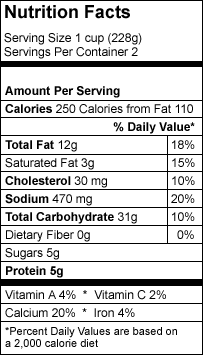
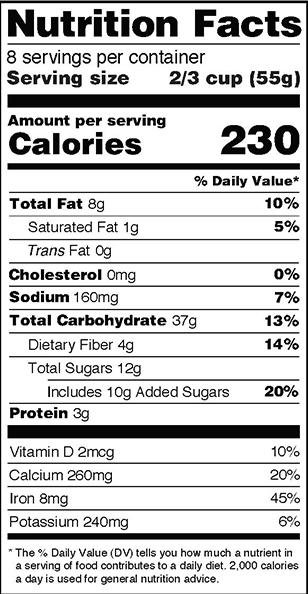




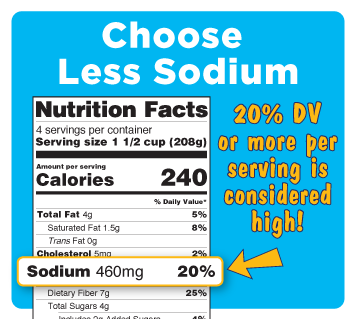
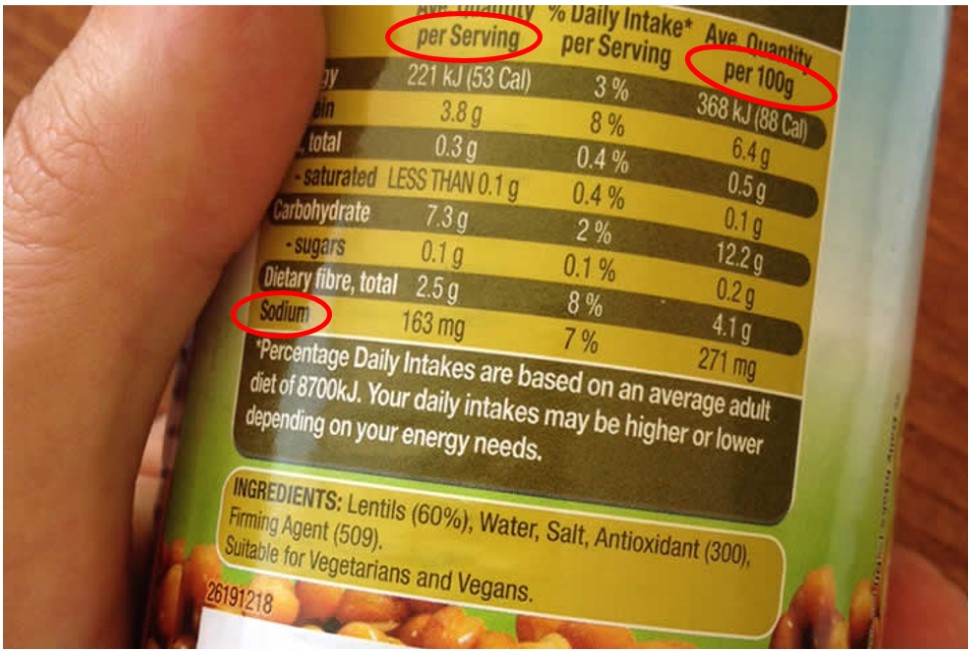


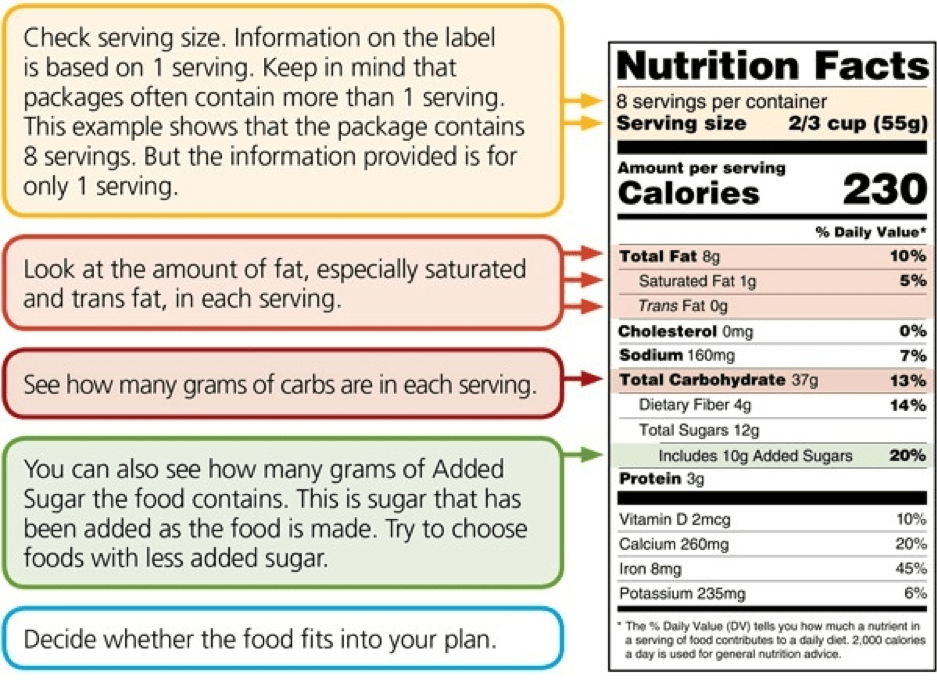

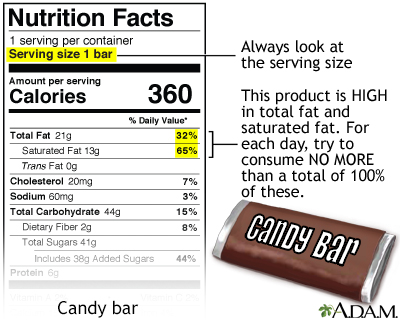


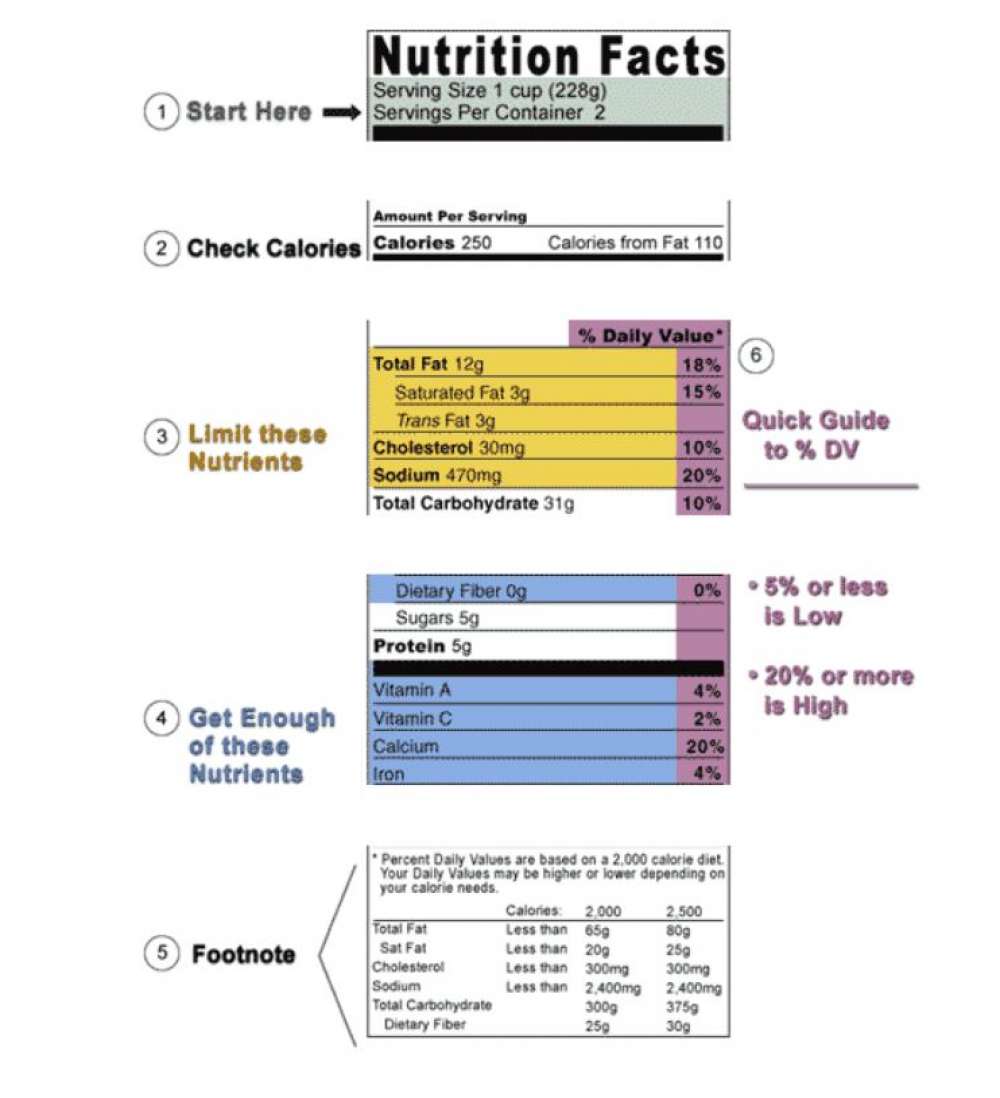

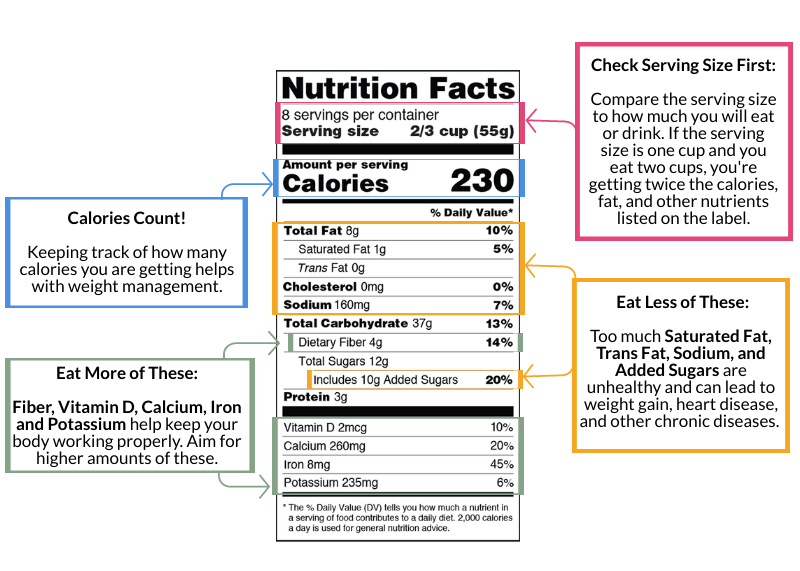







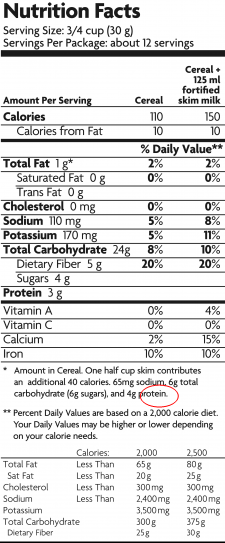

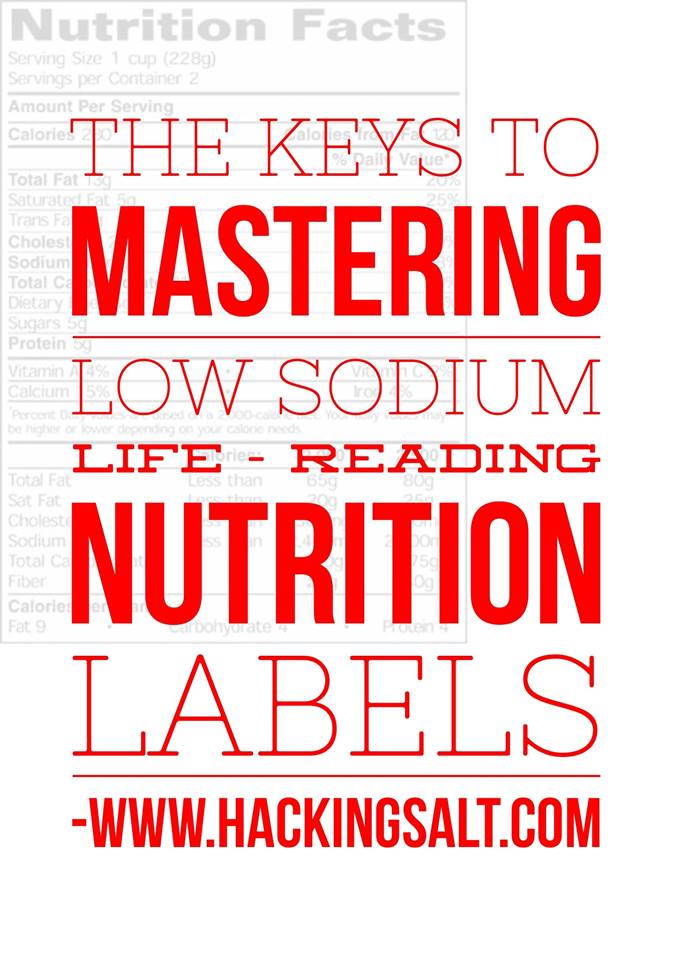

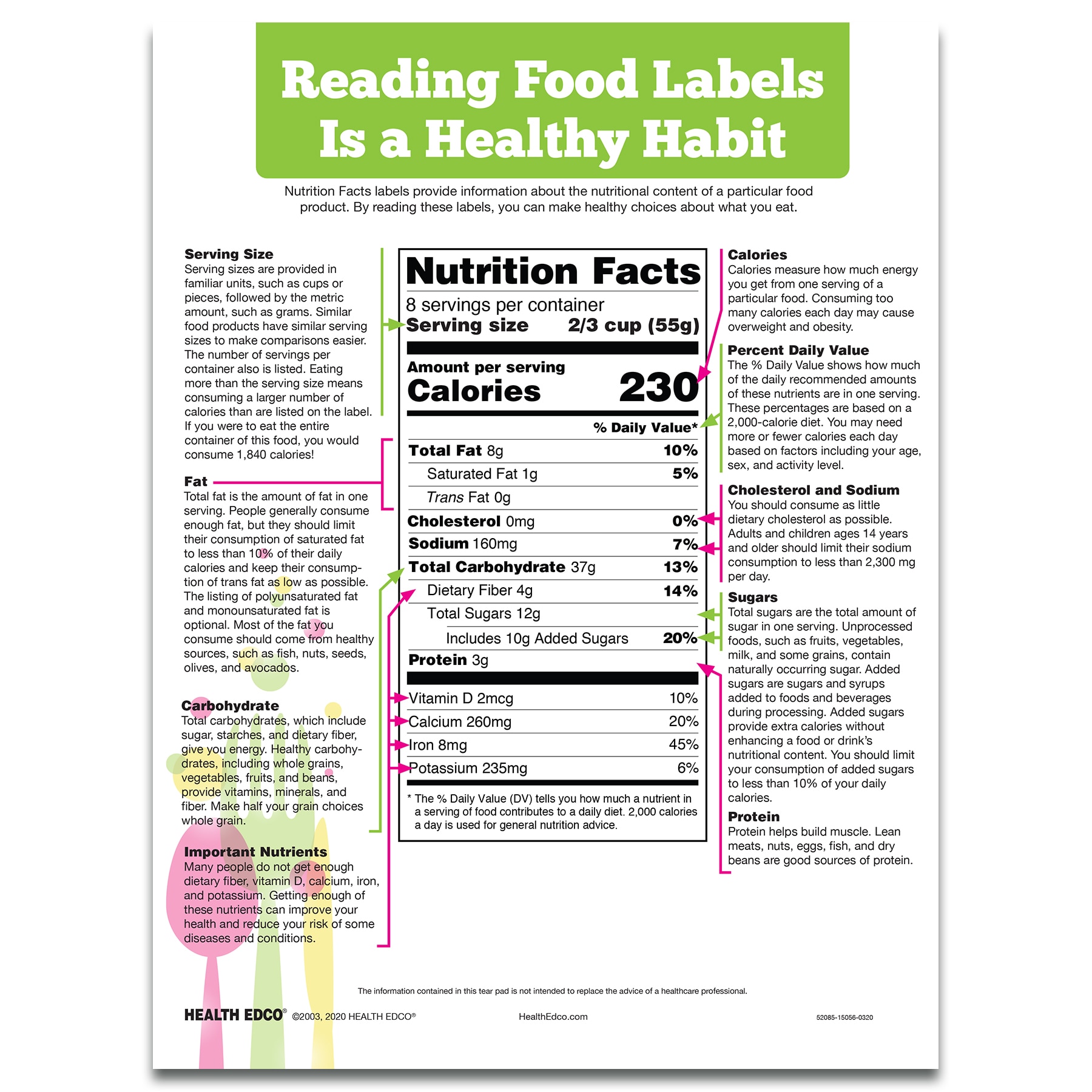







Post a Comment for "45 reading sodium on food labels"